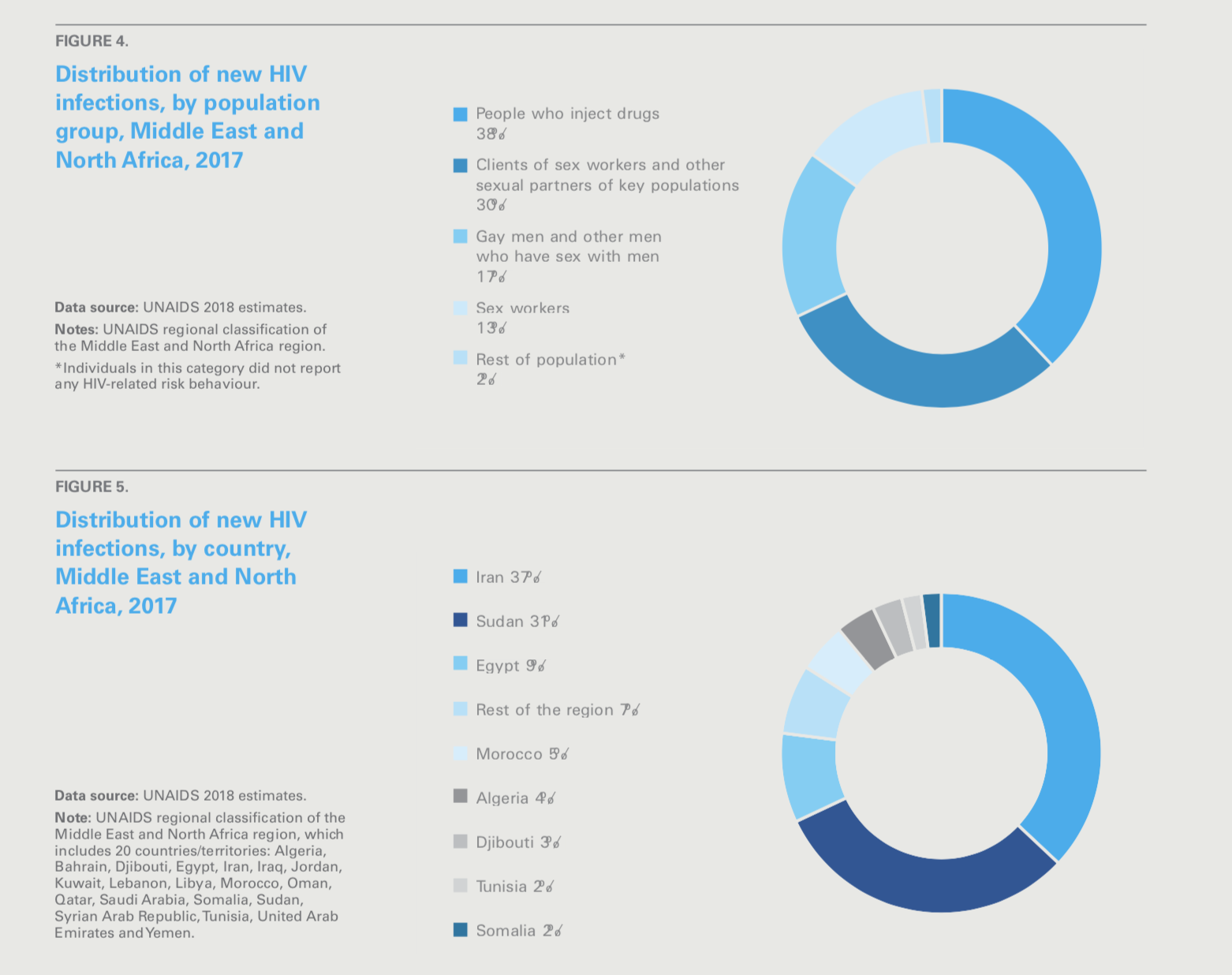With its concentrated HIV epidemic, the Middle East and North Africa has the advantage of a relatively low HIV burden among the general population, as well as among children and adolescents. To respond to the issues posed by HIV in the region, considerable efforts have been invested at the local, national and regional levels. Furthermore, country leaders throughout MENA have committed to the targets of the Sustainable Development Goals (SDGs), particularly SDG3.3, which calls for ending AIDS by 2030.
Yet, many problems remain – particularly those related to children and adolescents, such as relatively high rates of mother-to-child transmission and low rates of early infant diagnosis. Produced jointly by United Nations Children’s Fund (UNICEF), Joint United Nations Programme on HIV/AIDS (UNAIDS) and World Health Organization (WHO), “Seizing the Opportunity: Ending AIDS in the Middle East and North Africa” highlights the main challenges the region faces today, offers insights into how these may be addressed and contributes to our understanding of the unique characteristics of the regional HIV/AIDS epidemic. One of the central arguments the report makes is that today the Middle East and North Africa region is presented with a unique opportunity to end the AIDS epidemic – and doing so is an achievable goal, provided countries act with the required urgency, will and commitment.
This report is a result of close collaboration between the three UN agencies and the members of the core report team at UNICEF MENARO are grateful for the support from UNAIDS and WHO.
excerpt
Individual contexts vary, but several obstacles and challenges continue to restrict improved HIV data collection or more effective responses in the Middle East and North Africa. They include the following:
Humanitarian crises and volatile and fragile contexts. Several countries in the Middle East and North Africa are in the midst of severe conflicts or have yet to create strong governance or surveillance systems due to social and governmental focus on conflicts. Such countries include Iraq, Libya, Syrian Arab Republic and Yemen. Other countries, including Egypt, Jordan and Lebanon, are home to millions of refugees from neighbouring countries whose HIV vulnerabilities are unclear, a situation that complicates the parameters of what those countries can or should report or provide regarding HIV. In most such settings, gathering HIV data and providing high-quality, comprehensive prevention and treatment services in a reliable and consistent manner would be extremely challenging even if aggressively attempted by governments or other partners such as multilateral humanitarian and health agencies. Refugee and other migrant populations typically face a wide range of social, economic and physical and mental health challenges; HIV is just one of many potential priority issues. Often, too, there are numerous logistical and legal obstacles that can delay or prevent access to services and support for those living with or vulnerable to HIV in such settings – including national policies restricting non-citizens’ access to affordable and convenient health care.
HIV-related stigma and discrimination remain pervasive. Gauging the impact of stigma is difficult and imprecise in any context. But cultural, social and political factors in the Middle East and North Africa lend support to the belief that the people living with, affected by, and vulnerable to HIV face especially steep challenges compared with other parts of the world. HIV is closely associated with sex, which is a taboo subject in many of the region’s countries.
Criminalization of certain key populations. In nearly every context, members of all key populations in the Middle East and North Africa are not only highly stigmatized but face particularly harsh and forbidding legal barriers to their health, safety and lives. Same-sex relations between men are explicitly criminalized across much of the region and even punishable by death in some countries and jurisdictions. Sex workers and people who inject drugs in most places in the region risk death, imprisonment or other harsh consequences as well due to prevailing laws and policies.
“Deep-seated stigma and punitive legal regimes of this sort contribute to low uptake of HIV testing, prevention and treatment services, including by individuals who ac- knowledge risk factors but are fearful of being exposed.”

